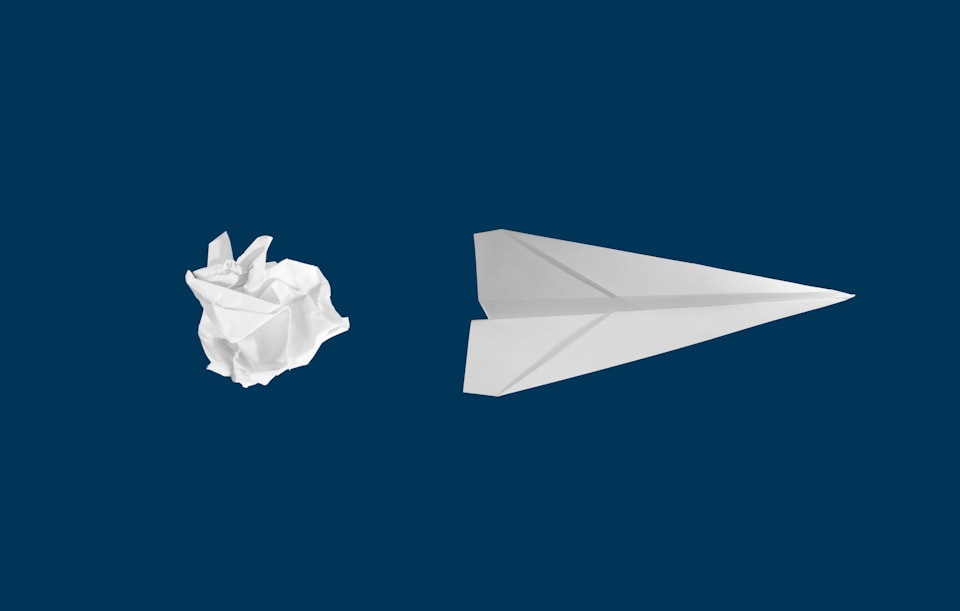Why does something work the way it does? How does it even exist? I've been covering a lot of "whats" in my Cool Concepts blog posts, but I've never addressed the hows and whys. The "whats" basically build the world around us, but the "hows and whys" feed our curiosity and let us follow our imagination. Here are some questions that my curiosity made me chase.
Why are plane windows oval in shape?
The oval shape of the windows of a plane is not just a design decision but a safety decision too. When a plane flies through different altitudes, the air pressure outside the aircraft keeps changing. On the other hand, the cabin is pressurized on the inside for people to travel. So, there is a pressure difference between the inside and outside of the aircraft. The oval shape of the windows helps distribute the pressure differences evenly so that the windows don't crack, as opposed to square or rectangular windows that are vulnerable to such cracks at the sharp corners, which could potentially damage the aircraft's body.
Why do left-handed people exist?
Roughly 10-15% of the world's population is left-handed, and this percentage has maintained itself for the past 500,000 years. Researchers previously thought that the reason that one hand is more dominant than the other is associated with the genetic differences between the two sides of the brain. But in a study published in 2018, researchers found that the genetic activity in the spinal cord could be the reason for left-handedness, which can be observed in fetuses right from 12 weeks into the pregnancy. The motor cortex part of the brain controls the body functions, but the brain is not connected to the spinal cord until the fetus is 15 weeks old, and the left- and right-handedness is determined before this. The researchers found significant differences between the left and right segments of the spinal cord that control arm and leg movement. In simple words, fetuses start using one hand more than the other even before the brain starts controlling the body.
How does strength training make the muscles grow?
We have over 600 muscles. They make up around 30-50% of our body weight. They hold us together and help us move. Muscles will either grow or lose strength, depending on how we treat them. Strength training is one of the proven techniques to develop muscles. When we put the muscles under tension, say to lift a heavy object, the brain sends signals to motor neurons in the body. The neurons then fire and cause the muscles to contract and relax, which pull on the bones and generate enough movements to achieve the task. If the weight is higher, the brain fires more neurons and demands help from more muscles (like tightening our backs, placing our feet firmly, lifting with two hands, etc.)
While this is happening, the muscle cells undergo microscopic damage due to the extra stress. At this point, the body releases inflammatory molecules called Cytokines, which activate the immune system to repair the injury. This damage is a good thing in this case when muscle building happens. The more damage is caused to the muscle tissue, the more our body will need to repair them. This constant repair and damage cycle results in bigger and stronger muscles as they adapt to increasing demands. Everyday activities don't stimulate enough muscle growth as our bodies are already adapted to them. So, we build muscles by intentionally challenging and injuring ourselves on microscopic scales.
How are we touching anything?
We touch things all the time. But what is touch? By definition, touch is physical contact between two objects. But this definition is problematic. I was blown when I learned about this in Richard Feynman's book Six Easy Pieces — technically, we can never touch anything. Let me explain. All matter is made up of atoms - humans, objects, literally everything. Every atom contains a nucleus surrounded by electrons. And electrons repel each other as they are all negatively charged. So, the short answer to our question — we don't.
So, when two objects come in "contact" with each other, the electrons in their atoms repel each other. And the force of repulsion between them is so strong that they can NEVER touch each other. So, when we touch something on an atomic level, we are not. There is always a tiny, tiny gap between any two objects.
Even if you try harder and poke into them, you're cutting through the atoms to make way for yours, but you're not touching them.
Now you may ask me how you can feel the touch. Here is the reason. The nerves in your body can feel the force of repulsion between the electrons, which causes the sensation of touch. It sounds like a complex thing but think about it. If the electrons don't repel each other, no two objects will be separate. Your hand will pass through a cardboard box when you touch a cardboard box. Think about this next time when you sit on a chair. You're not sitting on the chair; you are just hovering over it on an atomic level. There's always a tiny gap, and we're constantly floating. So cool, right?!
Why are circles and spheres abundant in nature?
What are the most fundamental shapes in nature? The answers are circles, spheres, and everything related to them. Most of the naturally occurring entities in nature are related to either. Some examples:
- Water droplets — spherical
- Bubbles — spherical
- Stems of plants, limbs of animals — cylindrical but mostly circular in cross-section
- Ripples formed in water — circular
- Eyeballs — spherical
- Blood cells — circular
- Planets and Stars — spherical or almost spherical
- Galaxies — circular disks (most common)
- Orbits of planets — circular or mostly circular (oval)
The main reason behind this is that the circle and sphere are minimum energy shapes. Circles have the largest ratio of area to circumference, and spheres have the largest ratio of volume to surface area. It takes less energy to form a circle or a sphere than a polygon like a square or a rectangle. Various forces hold things together from the inside. For example, surface tension for water, and gravity for celestial bodies, tend to pull from the inside, and thus a sphere is the most efficient shape that accomplishes that. On the other hand, when we touch still water, the force is exerted on all sides equally, and a circle is the only shape that accomplishes that. So, the cause of this is essentially the equalization of inward or outward forces.
Questions are a vital part of our lives. They lead us to the next thing. While the next thing could be an answer or another question, the process continues. What are some why and hows you've been wondering about? I'd love to know and learn. Remember, there are no "dumb" questions or answers. There are only questions, answers, and more questions. Dare to ask; let's start looking for them. Thanks for reading. Peace out!
References
- There's a Scientific Reason Why Plane Windows Are Always Round. — Science Alert.
- The reason some people are left-handed could have nothing to do with the brain — Business Insider.
- Sebastian Ocklenburg, Judith Schmitz, Zahra Moinfar, Dirk Moser, Rena Klose, Stephanie Lor, Georg Kunz, Martin Tegenthoff, Pedro Faustmann, Clyde Francks, Jörg T Epplen, Robert Kumsta, Onur Güntürkün (2017) Epigenetic regulation of lateralized fetal spinal gene expression underlies hemispheric asymmetries eLife 6:e22784
- What makes muscles grow? — Jeffrey Siegel.
- Six Easy Pieces — Richard P. Feynman.
- You can't touch anything — VSauce.
- Why Are so Many Objects in the Universe Round? — Medium.
- Do Perfect Circles Exist? Maybe — CMU.



